Affiliate links on Android Authority may earn us a commission. Learn more.
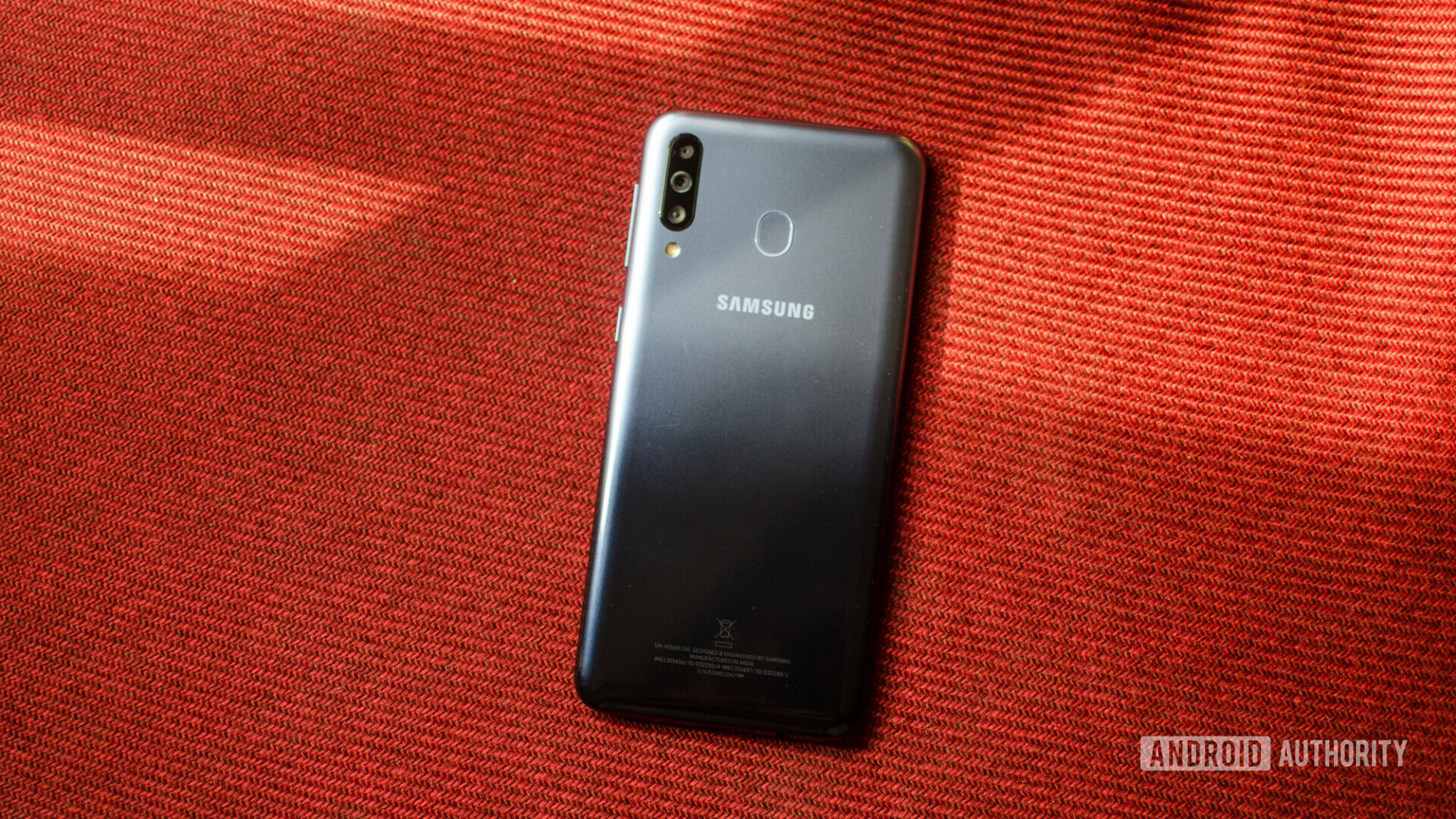
Samsung Galaxy M30
What we like
What we don't like
Samsung Galaxy M30
There’s little doubt that the mid-range smartphone segment is the most hotly contested category in India, at least as far as shipment volumes are concerned. Over the years, brands like Xiaomi and Honor have optimized their sales strategies and have consistently eaten into the marketshare of previous market leader Samsung.
Samsung's M Series represents a return to form.
Striking a balance between high-end specifications and a continuous race to the bottom as far as price is concerned is tricky. It has taken Samsung a few years but the company’s M series of phones indicates a return to form. We reviewed the Galaxy M10 and Galaxy M20 and found them to be perfectly competent devices that can hold their own. Marking the top-end of the lineup is the all-new Samsung Galaxy M30. Read on to find out what we think about the phone in our Samsung Galaxy M30 review.
About our Samsung Galaxy M30 review
I worked on this Galaxy M30 review over the course of a week. My Samsung Galaxy M30 review unit with the Samsung Experience 9.5 UI on Android 8.1.0 was used in India on the Airtel network. The unit was running the February 1st, 2019 security patch and build number M1AJQ.M305FDDU1ASBA.
Design
- 159 x 75.1 x 8.4 mm
- USB-C
- matte plastic
- dual nano SIM
- 3.5mm jack
- microSD card slot
There’s a certain homogeneity in the design language of Samsung’s M Series of phones. The phones are all made of quality plastics and have modern features like waterdrop notches and large batteries.
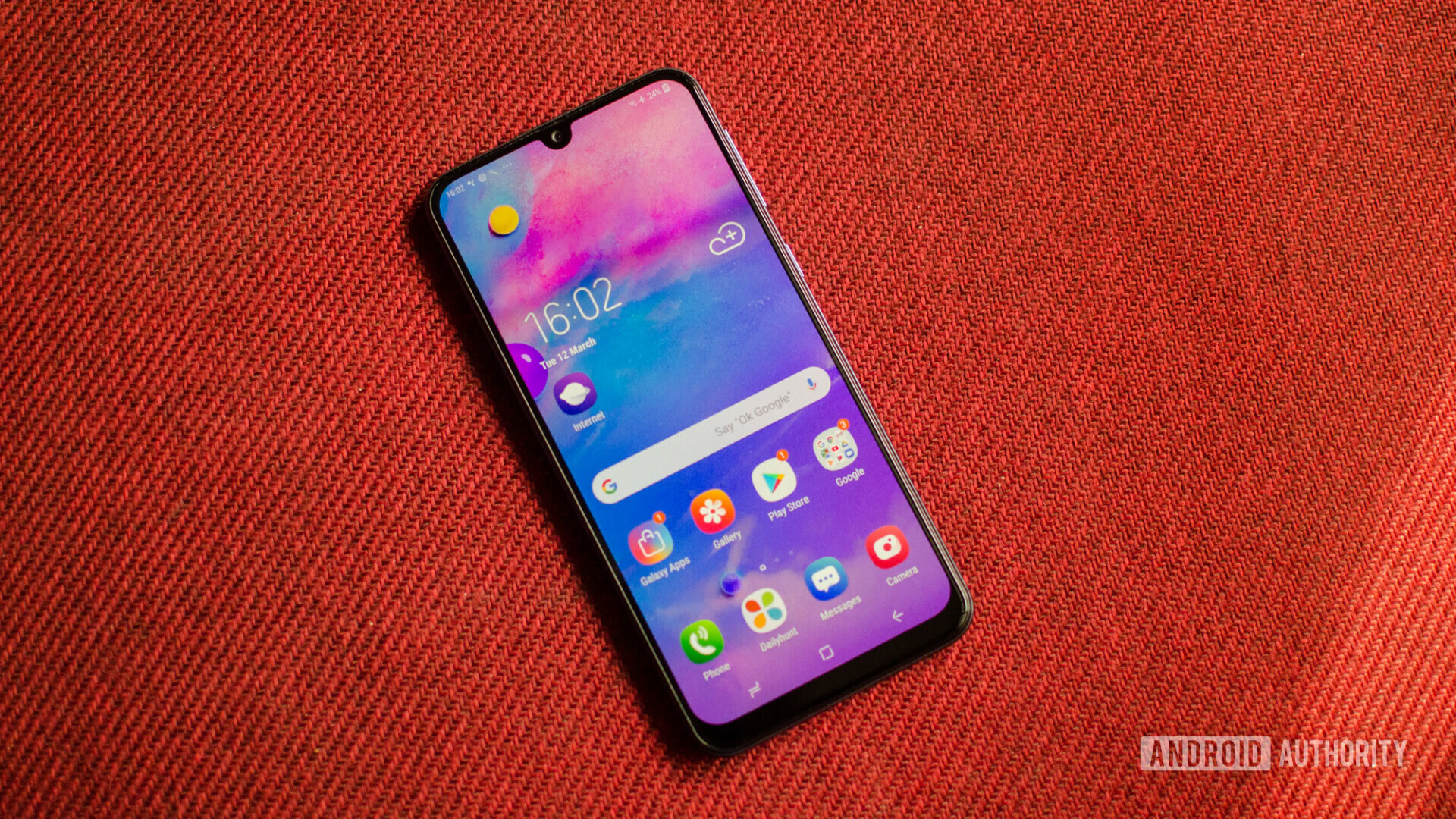
Okay, fine. A notch might not be a new feature per se, but it definitely points at Samsung finally fighting back for relevance in the entry-mid-range segment by keeping up with the latest trends. The screen used is of the ‘Infinity-U‘ variety, with all-around small bezels, though you do get a substantial chin at the bottom.
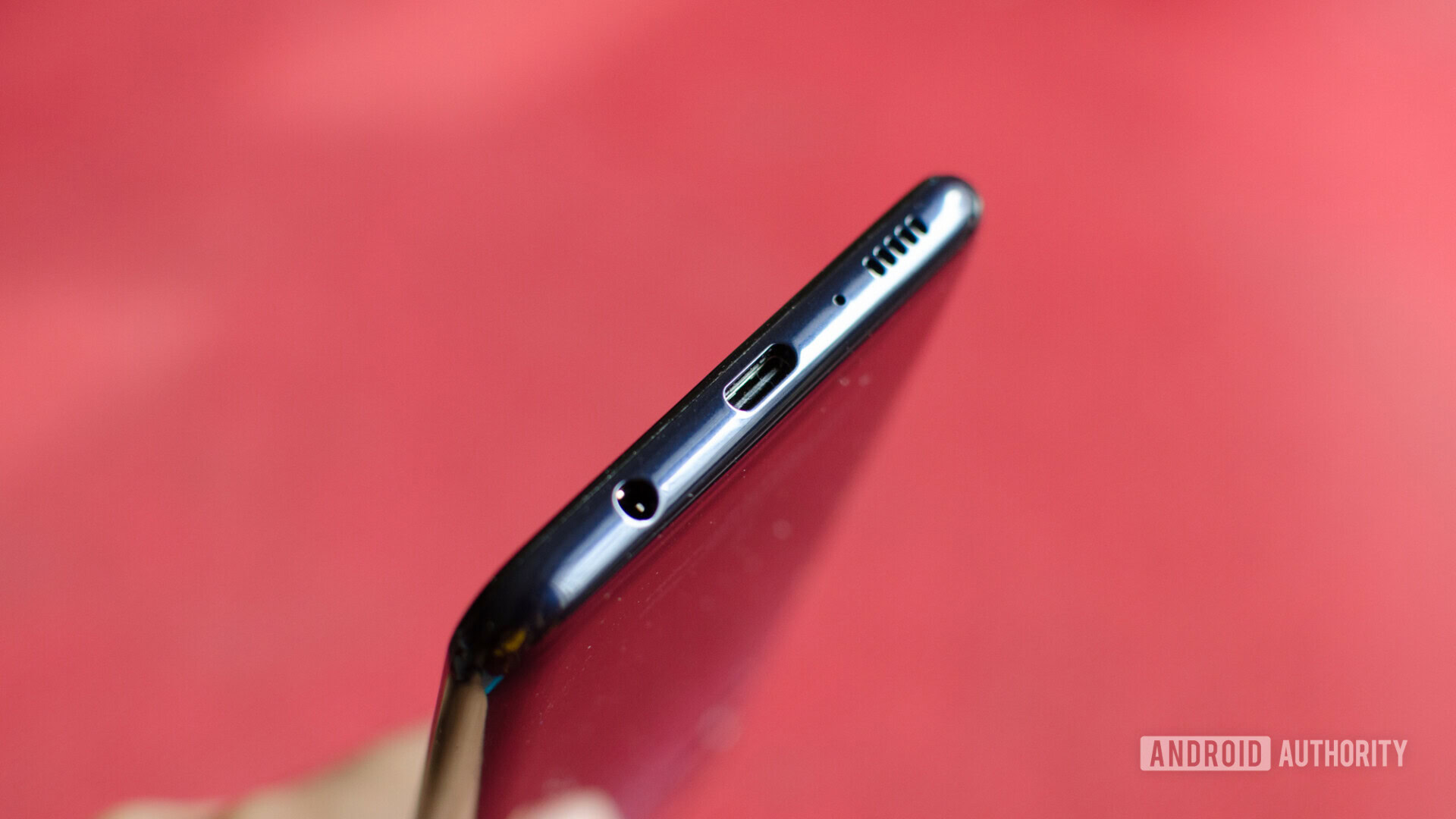
The right side of the phone has the volume rocker and a power button. The buttons are ever so slightly spongy, but the ergonomics make up for it. In fact, even the fingerprint reader is very comfortable to reach. It is also one of the fastest in the mid-range segment and I found myself opting for it over the dodgy face unlock option. Meanwhile, on the left side is a tray with slots for two nano-SIM cards, as well as a dedicated microSD card slot.
Along the bottom edge of the phone lies the USB-C connector, the 3.5mm audio jack and a speaker grille. The latter doesn’t go too loud and the sound produced is quite thin. There’s no bottom end to speak of.
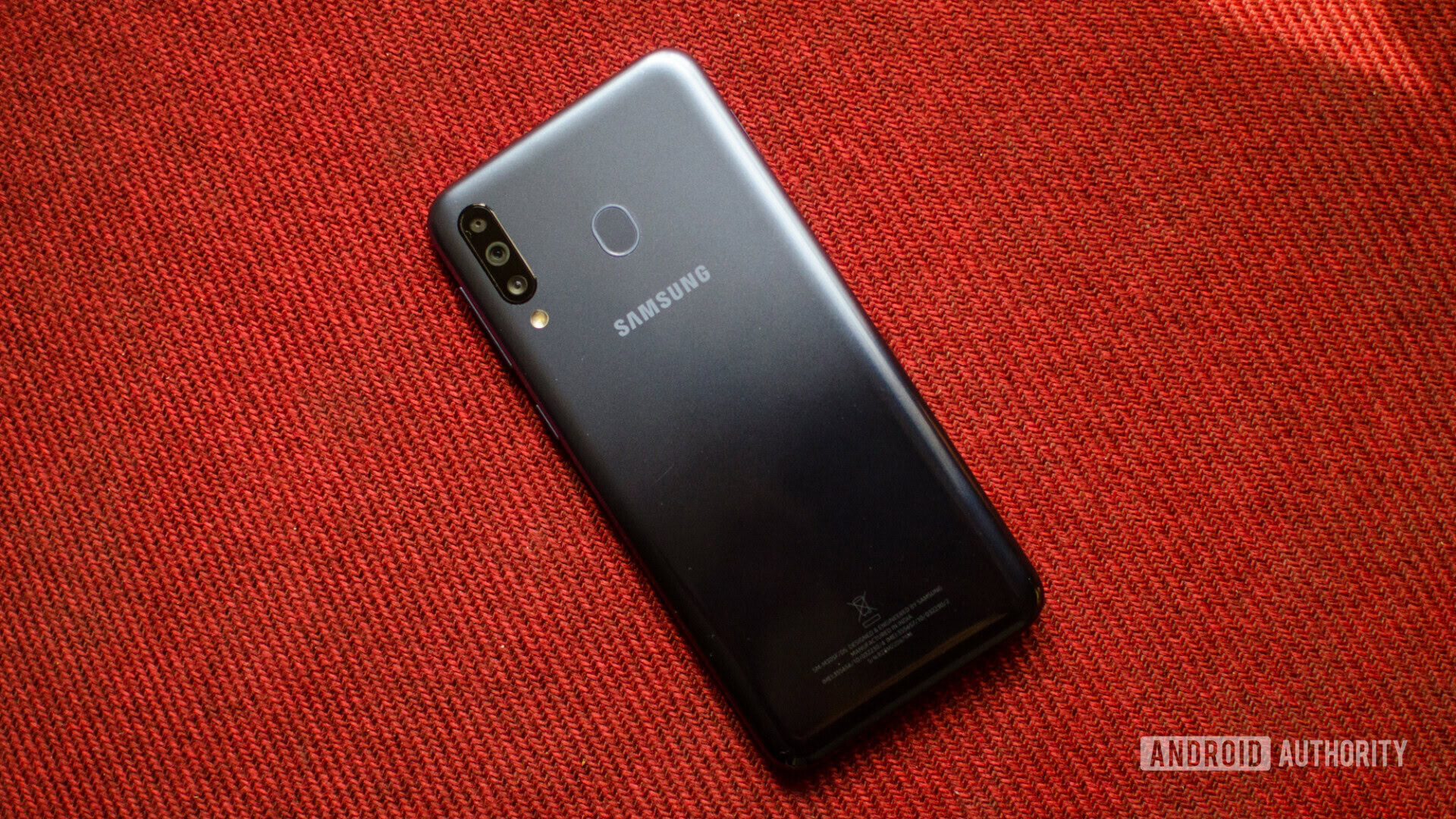
The Galaxy M30 has a gradient-style finish on the back that’s unlike the finish on the Galaxy M10 and 20. There is something oddly appealing about the subdued grey-to-black finish on the phone. It stands in sharp contrast to the hyper-glossy multi-color look that most phones seem to be going for these days.
Unfortunately, the back is made of a rather scratch-prone plastic and you will have to hide that beautiful finish in a case if you want it to keep looking pristine. On the flip side, the matte finish helps avoid fingerprints. The back of the phone curves along the edges in an almost pebble-like fashion and makes the Galaxy M30 very comfortable to nestle in the hand.
Display
- 6.4-inch
- Super AMOLED
- 1080 x 2340 pixels
- 394ppi
- 19.5:9
- Infinity-U notch
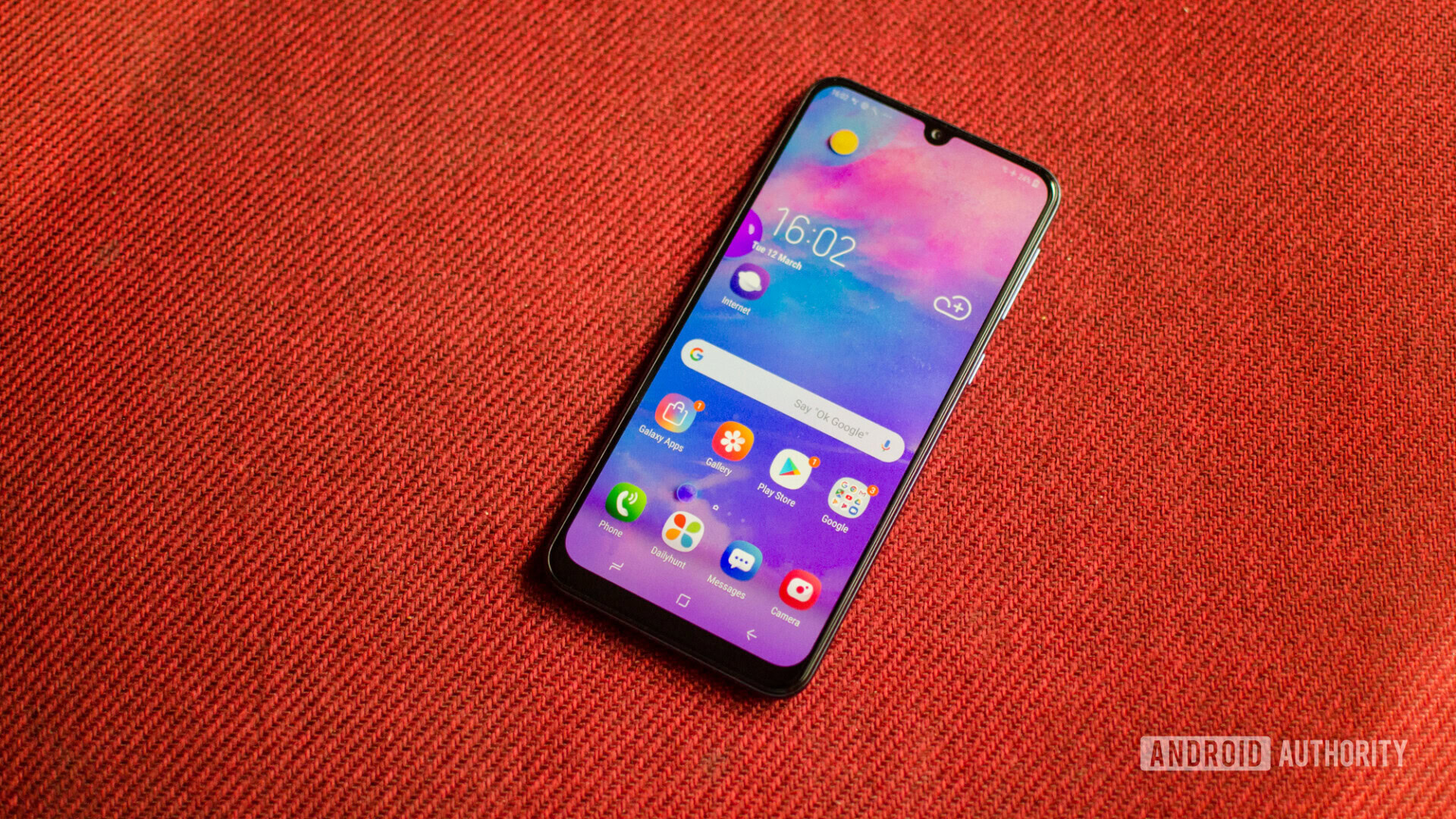
While we liked the LCD display on the Galaxy M20 too, the Super AMOLED screen here is definitely a step up and is one of the best you can get in this price range. Owing to the nature of the technology, the contrast levels are fantastic and so are viewing angles. The screen looks stunning at all angles.
Black levels go down to inky-dark levels, and maximum brightness, when set manually, is sufficient for outdoor viewing as well. In automatic mode, the brightness adjustment is a bit conservative and the screen might not be entirely visible in bright sunlight. The default white point is quite accurate but should you want a warmer or cooler tone, you can switch over to the AMOLED Cinema or Photo profile in the settings.
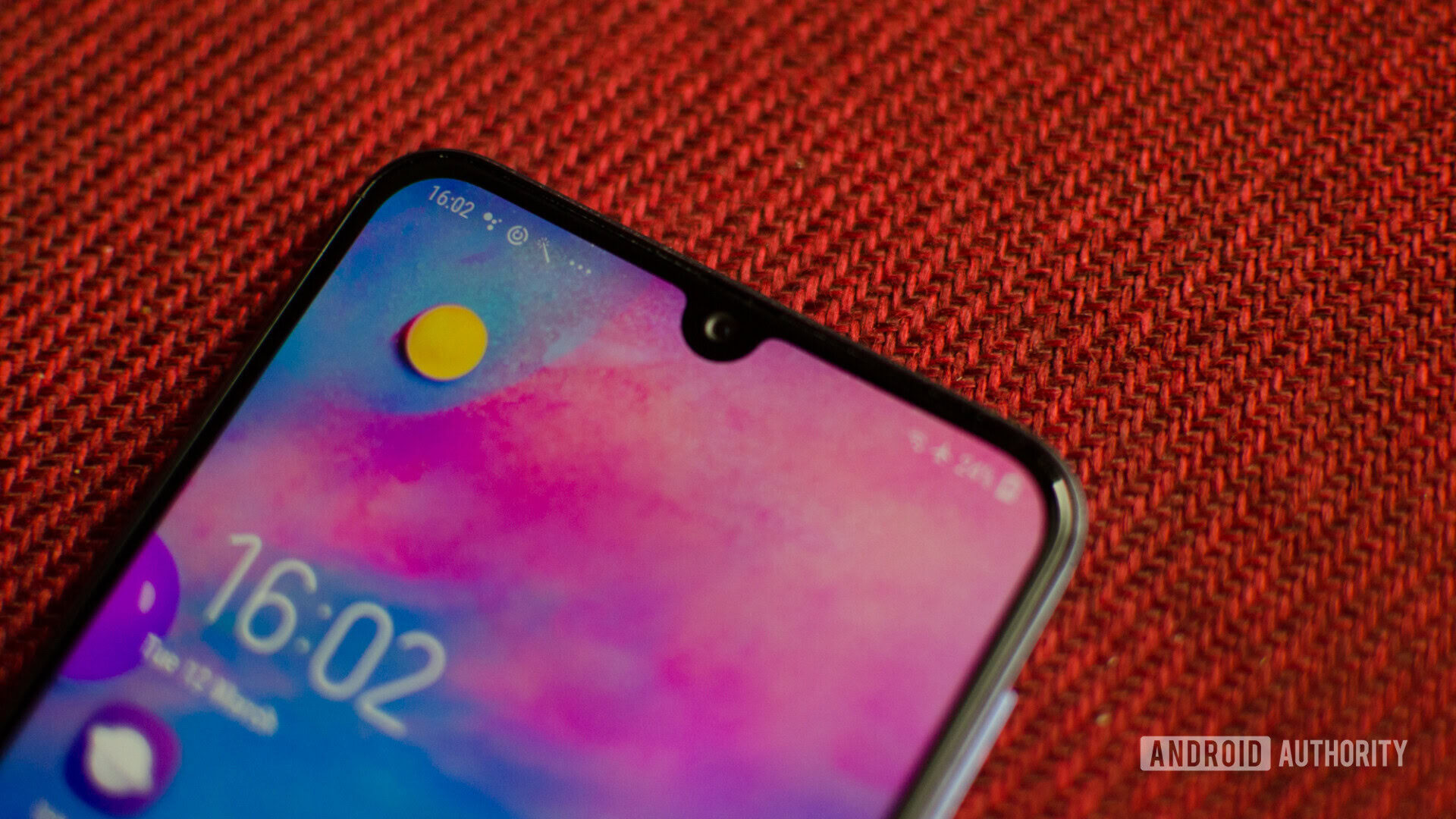
The water drop notch doesn’t really get in the way of the viewing experience. There is an option to hide the notch but Samsung has not done a very good job at this. A single black bar cuts across through the top and makes no attempt to match up with the curved corners seen at the bottom of the display. Generally, the notch is quite unobtrusive and we doubt most users would have any issues getting used to it.
Yes, the phone has support for the Widevine L1 DRM protocol so you’ll be able to stream Netflix in HD on your phone.
Hardware
- Samsung Exynos 7904
- octa-core
- 14nm
- 2 x Cortex A73 + 6 x Cortex A53
- 4GB or 6GB of RAM
- 64GB or 128GB storage
- microSD expandable
- VoLTE
Internal specifications of the Samsung Galaxy M30 are the same as on the Galaxy M20 for the most part. The phone is powered by an Exynos 7904 chipset which is built on a 14nm process. This is an octa-core chipset with a combination of two high-performance Cortex A73 cores combined with six Cortex A53 efficiency cores.
The 4GB RAM variant has 64GB of storage, whereas the 6GB RAM version ships with 128GB of storage. There is a dedicated microSD card slot to expand that storage further. About 51GB of storage is available out of the box.
Like most other smartphones in the category, the Samsung Galaxy M30 is also a dual-SIM device and has two dedicated nanoSIM card slots, both of which support VoLTE. The phone was generally very good at network performance, and during my time with the phone, I used it extensively to make phone calls. Call quality was clear at both ends and the phone did a good job despite a patchy network in the area.
Performance
- Mali G71 MP2 GPU
- Not great for gaming
- Excellent general performance
On its own, the Exynos 7904 in the Galaxy M30 is a pretty solid chipset for the category. However, prospective buyers will be pitting the phone against the Redmi Note 7 Pro and that’s where the challenge lies. The Redmi Note 7 Pro with its Snapdragon 675 processor is substantially more powerful.
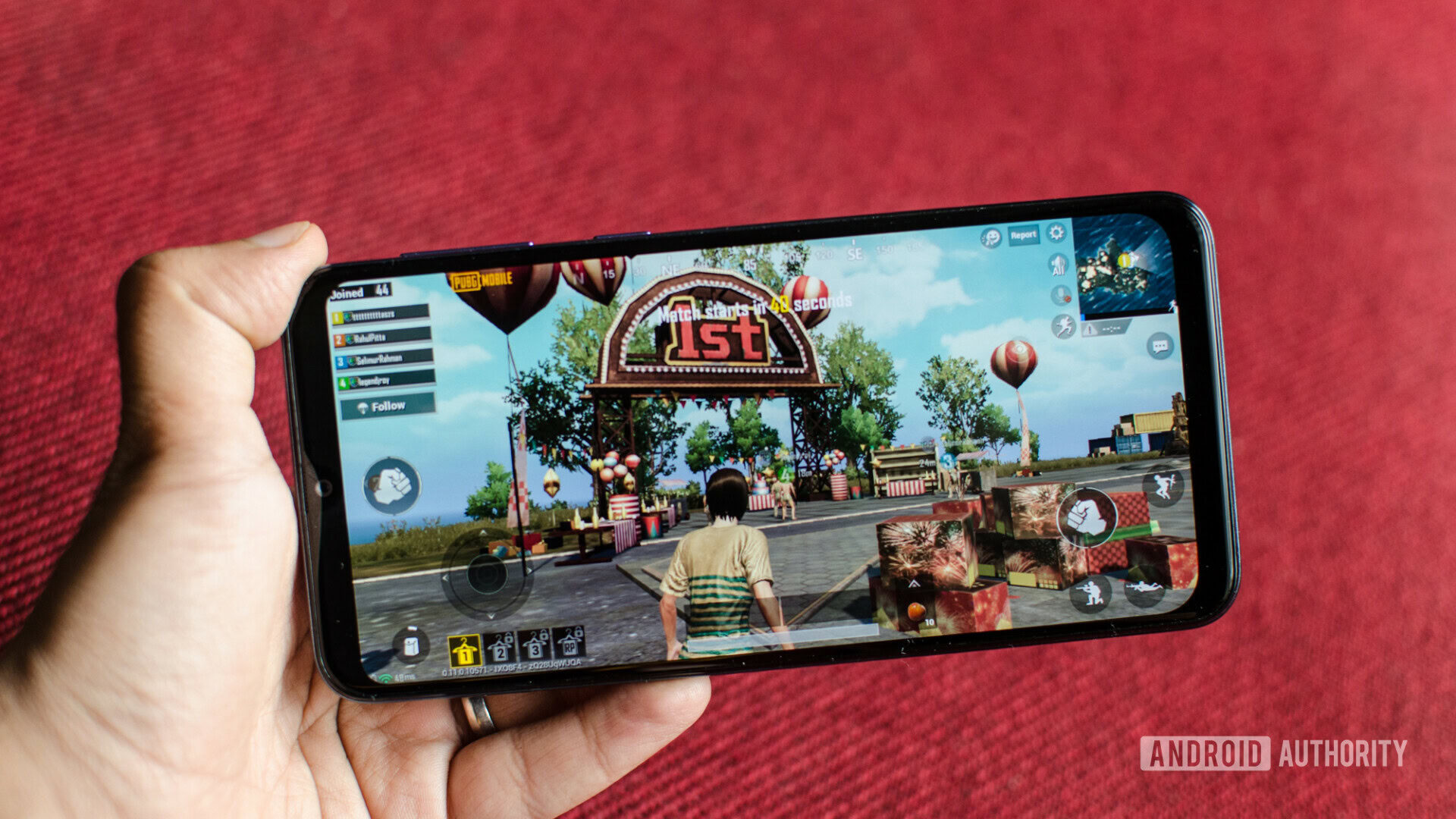
If your use case is entirely focused on social media, phone calls and texting, you won’t notice much of a difference. Gamers will be somewhat disappointed since the Mali G71 MP2 GPU definitely lags behind the Adreno 612 on the Note 7 Pro’s Snapdragon 675. The Galaxy M30 defaults to medium graphics in PUBG while the Redmi Note 7 Pro was able to crank it up to high. Bumping up the graphics results in a choppy but playable experience. In short, the Galaxy M30 might not be the best choice for mobile gamers.
That’s not to say that performance is bad. General performance is very refined and Samsung has done an absolutely fantastic job at making sure that there are no performance drops anywhere in the UI. You will definitely enjoy using this phone. Plus, there are no annoying ads either (pssst.. Xiaomi!).
Software
- Android 8.1.0
- Samsung Experience 9.5 UI
- Glance app
- Good gestures controls
- Some bloatware
Like the Galaxy M10 and M20, the M30 too runs Android 8.1.0 with the Samsung Experience 9.5 UI on top. As Google gets ready to unveil Android Q, it is quite disappointing to see that Samsung still isn’t shipping their latest phones with Android Pie.
The redeeming characteristic here is the overall level of polish. Samsung has done an exemplary job with the software and the entire experience is silky smooth. In my week with the phone, the usage experience was almost perfect except for a stray frame drop here and there.
The default lock screen displays magazine-style information updates via the Glance app. This can be quite distracting but there is an option to switch it off. The home screen is very flexible and offers a whole bunch of customization options. It can be switched from the default iOS-style app and homescreen layout to one that displays only selected apps and hides the rest under a separate app drawer.
Samsung has done an exemplary job with the software and the entire experience is silky smooth.
The Galaxy M30 supports gestures as well to maximize screen real estate. I found these to be very intuitive. Unfortunately, the phone ships with a fair few apps installed out of the box. There’s an entire suite of Samsung apps, including the company’s alternatives for notes, calendar, and more. Having an option to install these separately would definitely help reduce the clutter. Additionally, there are a few third-party apps including Dailyhunt, Amazon and Microsoft’s app suite. Microsoft’s apps on the Galaxy M30 cannot be uninstalled.
Camera
- 13MP main camera
- 5MP depth sensor
- Some overexposure
- Mediocre 16MP front camera
The camera hardware on the Galaxy M30 is essentially the same as on the M20, except for the addition of an additional 5MP depth sensor. The primary camera is a 13MP sensor with an f/1.9 aperture. The secondary sensor has a 5MP ultra-wide camera while the third sensor is the aforementioned depth sensor.
The camera is, unfortunately, plagued by the same issues we saw on the Galaxy M20. Images tend to appear overexposed. Both the standard and wide-angle image demonstrate burnt out highlights. This is especially noticeable on the pillar towards the right.
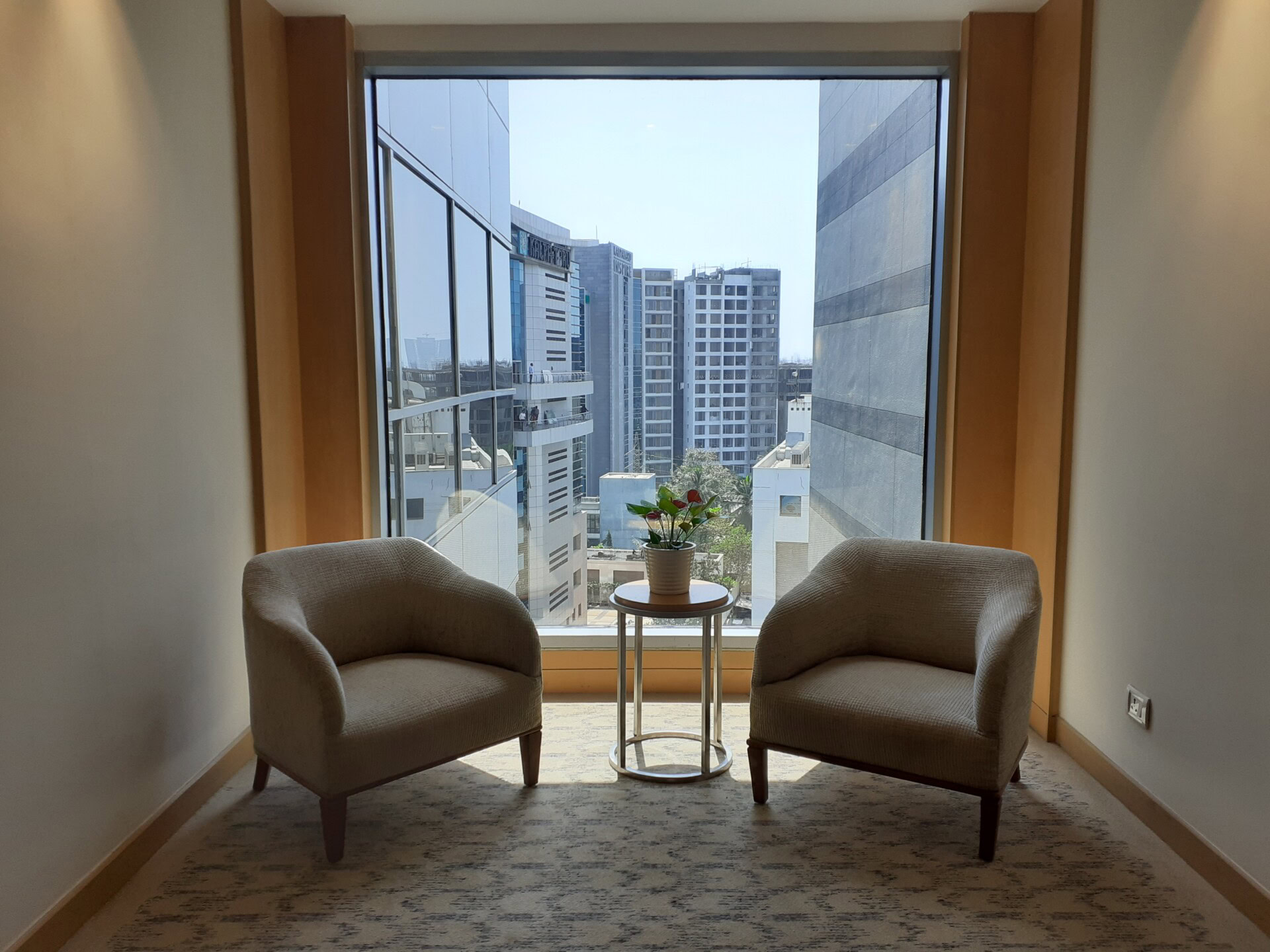
In well lit conditions, the phone can capture serviceable shots, though there is a noticeable lack of fine detail in the images. You definitely do not want to be pixel peeping here.
This issue is particularly exacerbated in less than ideal conditions. Both the primary and wide-angle sensor suffer from heavy noise reduction and a general lack of fine details when the lights dip down. The 5MP ultra-wide sensor just doesn’t capture enough data and is best used for outdoor landscape shots since it lacks focusing capabilities.

Indoors, even in bright light, the Galaxy M30 doesn’t fare all that well. There is significant noise in the shadow regions and the image generally appears a bit blown out. Zooming in reveals a watercolor-like noise reduction effect.
The 16MP front-facing camera takes mediocre images. The phone can manage Full HD video recording on both the front and the rear camera. Unfortunately, there is no form of video stabilization available. Full resolution image samples are available here.
Battery
- 5,000mAh
- Two full days of use
- 15W fast charging
Battery life on the Samsung Galaxy M30 is exceptional. There’s a 5,000mAh battery onboard that is powerful enough to last a full day with ease. Coupled with good battery optimization, my Samsung Galaxy M30 review unit comfortably lasted almost two full days of use.
Battery life on the Samsung Galaxy M30 is exceptional.
In my week of testing, I used the phone extensively for phone calls, web browsing, social media use, music streaming, and even a spot of gaming. With a fairly typical use case, the phone consistently delivered close to eight hours of screen on time. The phone supports 15W fast charging over USB-C. A fast charger is included in the box with the Galaxy M30.
Galaxy M30 specifications
| Samsung Galaxy M20 | |
|---|---|
Display | 6.4 inches, 1080 x 2340 pixels (~394 ppi), 'Infinity-V' Super AMOLED |
SoC | Exynos 7904 (2 x Cortex A73 at 1.8GHz, 6 x Cortex A53 at 1.6GHz) |
GPU | Mali-G71 MP2 |
RAM | 4/6GB |
Storage | 64/128GB Micro SD Expansion |
Cameras | Rear: 13MP, f/1.9, 5MP, f/2.2 Ultra Wide 120 degrees, 5MP, f/2.2 Depth Sensor Front: 8 MP, f/2.0 |
Battery | 5,000mAh, USB-C Fast Charging |
IP Rating | None |
Fingerprint Sensor | Yes |
Sensors | Accelerometer, proximity, magnetometer, compass, gyroscope |
Software | Android 8.1.0, Samsung Experience 9.5 |
Headphone jack | Yes |
Dimensions | 159 x 75.1 x 8.4 mm |
Verdict
The Samsung Galaxy M30 marks the top end of the millennial-focused Galaxy M series and takes the Redmi Note 7 Pro head on as far as price is concerned. Between the better performance and camera capabilities, Xiaomi’s mid-range champion does look like the better device on paper.
However, if you are looking for a reliable daily driver, there is a case to be made for the Samsung Galaxy M30. The Super AMOLED display looks fantastic, the 5,000mAh battery lasts forever, and the optimized, ad-free user experience is worth its weight in gold.
There is a case to be made for the Samsung Galaxy M30 as a reliable daily driver.
The Galaxy M30 is priced at 14,990 rupees (~$210) for the 4GB RAM and 64GB storage version, while you can step up to the 6GB RAM variant with 128GB of storage for 17,990 rupees (~$250).
There you have it — our Samsung Galaxy M30 review. What do you think about the Samsung Galaxy M30? Is Samsung headed in the right direction? Let us know in the comments section.